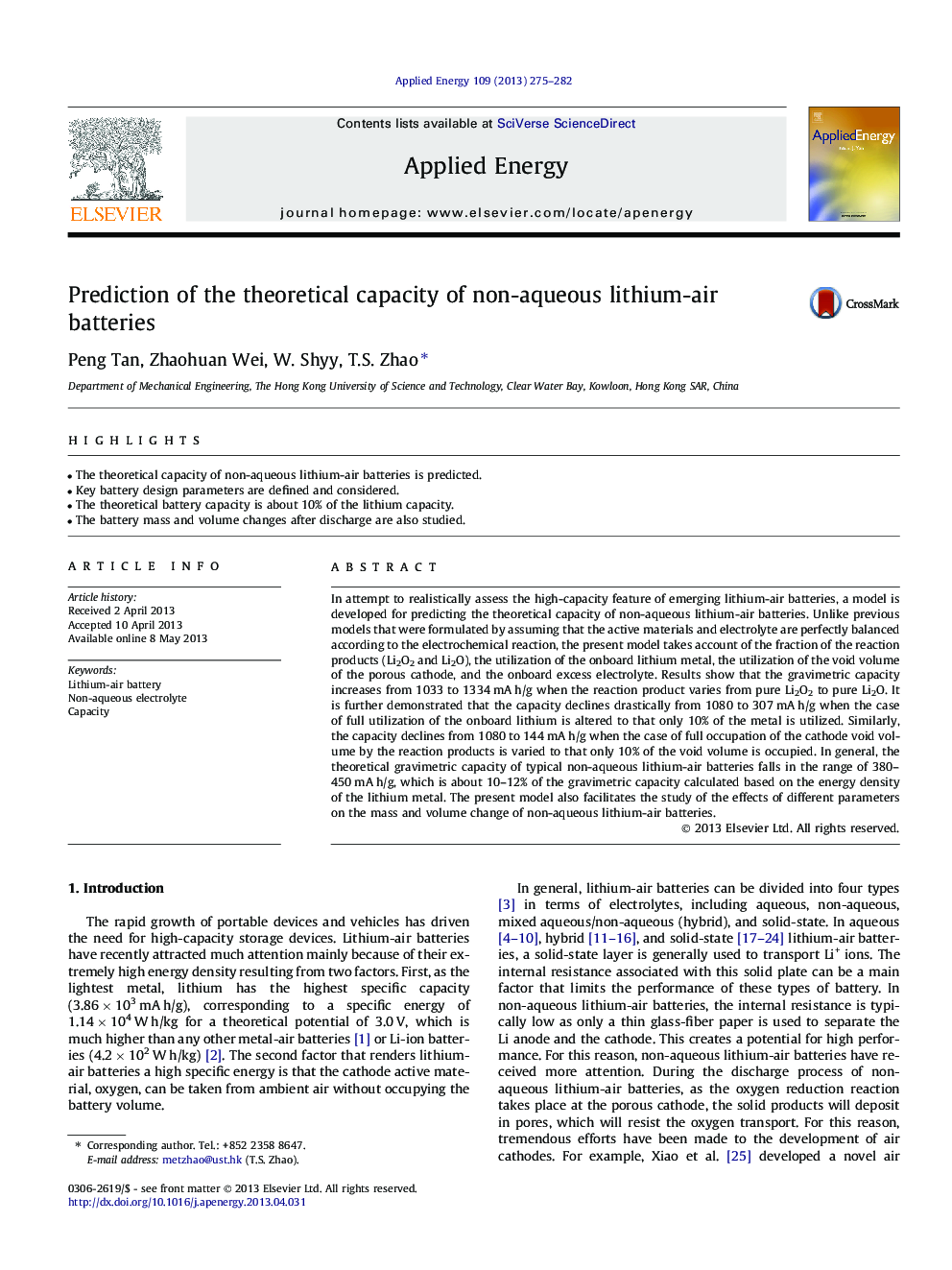| Article ID | Journal | Published Year | Pages | File Type |
|---|---|---|---|---|
| 243103 | Applied Energy | 2013 | 8 Pages |
•The theoretical capacity of non-aqueous lithium-air batteries is predicted.•Key battery design parameters are defined and considered.•The theoretical battery capacity is about 10% of the lithium capacity.•The battery mass and volume changes after discharge are also studied.
In attempt to realistically assess the high-capacity feature of emerging lithium-air batteries, a model is developed for predicting the theoretical capacity of non-aqueous lithium-air batteries. Unlike previous models that were formulated by assuming that the active materials and electrolyte are perfectly balanced according to the electrochemical reaction, the present model takes account of the fraction of the reaction products (Li2O2 and Li2O), the utilization of the onboard lithium metal, the utilization of the void volume of the porous cathode, and the onboard excess electrolyte. Results show that the gravimetric capacity increases from 1033 to 1334 mA h/g when the reaction product varies from pure Li2O2 to pure Li2O. It is further demonstrated that the capacity declines drastically from 1080 to 307 mA h/g when the case of full utilization of the onboard lithium is altered to that only 10% of the metal is utilized. Similarly, the capacity declines from 1080 to 144 mA h/g when the case of full occupation of the cathode void volume by the reaction products is varied to that only 10% of the void volume is occupied. In general, the theoretical gravimetric capacity of typical non-aqueous lithium-air batteries falls in the range of 380–450 mA h/g, which is about 10–12% of the gravimetric capacity calculated based on the energy density of the lithium metal. The present model also facilitates the study of the effects of different parameters on the mass and volume change of non-aqueous lithium-air batteries.
